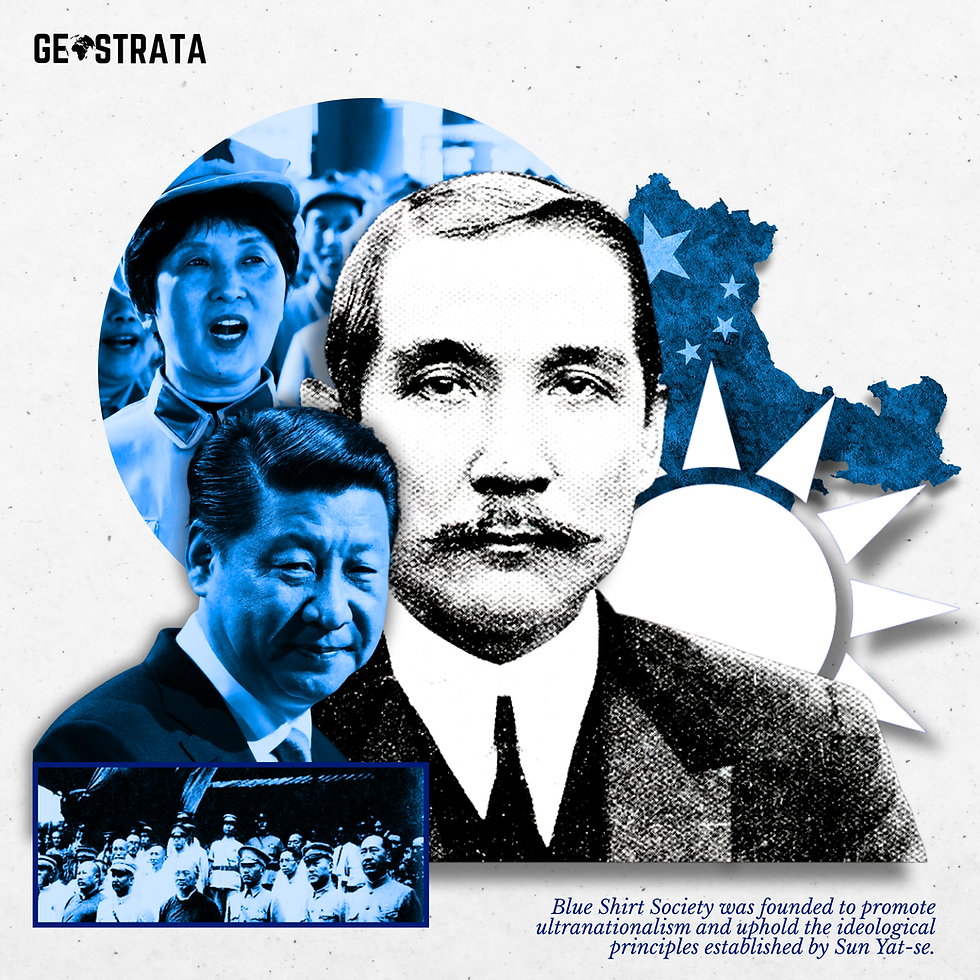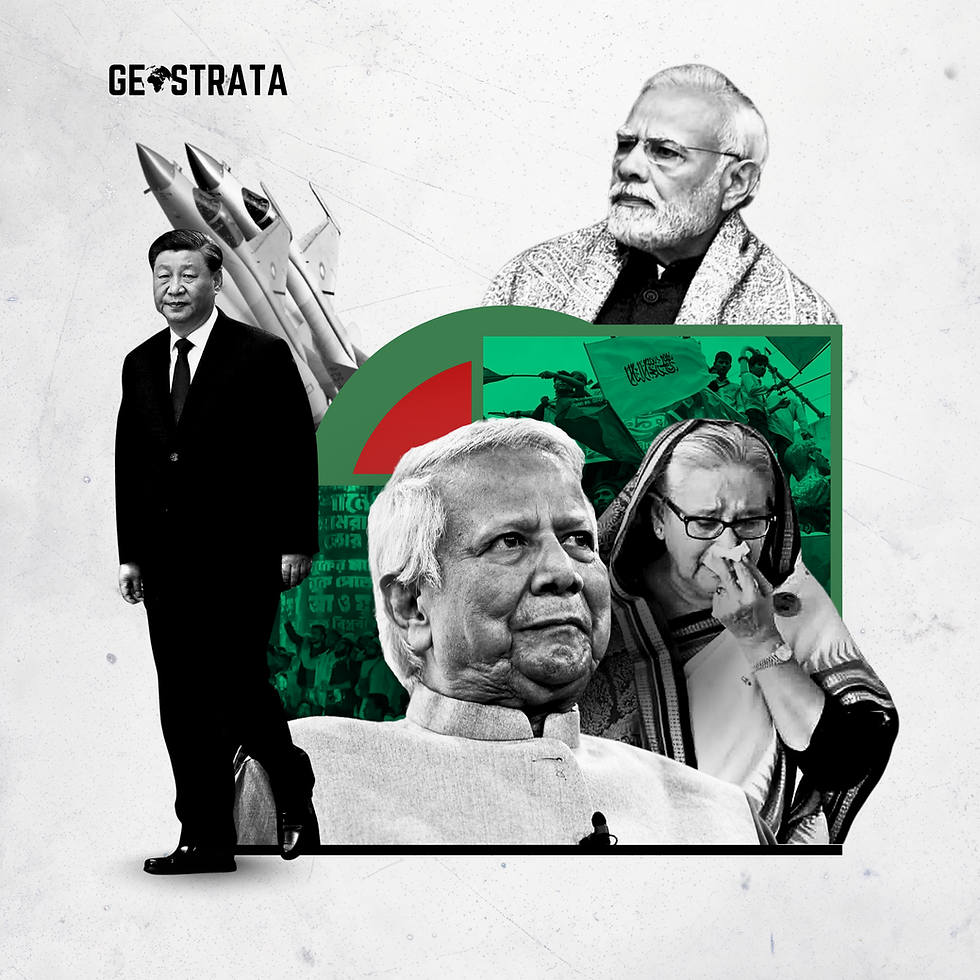Ram Kaj Kinhe Binu Mohi Kahan Vishram
- THE GEOSTRATA

- Jan 22, 2024
- 4 min read
जा पर कृपा राम की होई ।
ता पर कृपा करहिं सब कोई ॥
जिनके कपट, दम्भ नहिं माया ।
तिनके हृदय बसहु रघुराया ॥
~ श्रीरामचरितमानस
Life is a strange journey; no matter what comes our way, we somehow find something to be sad about. In other words, there is a presence of inherent sadness in one’s attachment to one’s actions. However, when we delve deep into the matters of philosophy, we encounter that it is not action that makes us sad, but results. Or If I may add some stoic and Vedantic wisdom to it, I could say that it’s actually our expectations from our results that are causing indispensable agony.

Ram Mandir Illustration by The GeostrataRam Rajya
The idea of such a scale is profoundly scary and thrilling. It propounds that it does not make any sense for one to worry about something that is not in one’s hands. Stoics called this "the dichotomy of control." They say to focus on the things you can control and ignore the rest. Epictetus rightfully puts it: “Happiness and freedom begin with a clear understanding of one principle. Some things are within your control. And some things are not.”
In India, there is an Ashtavakra Samhita or Ashtavakra Gita that, eliciting the philosophy of Advaita Vedanta, talks about the importance of detachment from one’s action in order to realise one’s true potential. Many other scriptures in India teach us the lessons in the same line; notable of them are Shri Valmiki’s Ramayana and Shri Tulsidas’s Ramcharitmanas.
As the Ram Mandir has been inaugurated today in Ayodhya, it gives us an opportunity to look at how the character and philosophy of Lord Ram can help us navigate the complexities of life. In Sundarkand of the Ramcharitmanas, there is a particular incident that deserves a special mention here.
Lord Hanuman, in order to reach Lanka, takes the mighty jump; however, in the middle of the ocean, the Mainak mountain requests that he (lord Hanuman) have some rest on the mountain since Lord Hanuman has been travelling for days prior to the jump. The response of Lord Hanuman to that request provides a great lesson for generations to come.
He replies, “राम काज कीन्हें बिनु, मोहि कहां विश्राम,” which means, “How can I rest until I complete the duty entrusted to me by my Shri Ram?”
In the age of social media, when an average youth spends hours scrolling reels on Instagram, this answer by Lord Hanuman compels them to do the entrusted duty to them; it is not only necessary for their growth but also the wish of God.
Further, when we talk about Shri Ram, it is not only Dashrath Nandan Ram but the Ram, the supreme consciousness of the universe. In Ramcharitmanas Shri Tulsidas, introducing Shri Ram, writes, “एक अनीह अरूप अनामा। अज सच्चिदानंद पर धामा ॥ ब्यापक बिस्वरूप भगवाना। तेहिं धरि देह चरित कृत नाना ॥ '' that translates into “The supreme God, who is one, desireless, formless, nameless and unborn, who is Truth (or eternal), Consciousness and Bliss, who is supreme effulgence, all-pervading and all-formed-it is He who has performed many deeds assuming a suitable form.” And as we correlate with the verses of the Brihadaranyaka and Chandogya Upanishads, Ram is the supreme consciousness, the light of which lies within all of us.
In life, sometimes one encounters difficulties, for they are inevitable. During such moments, the wiser thing to do is to keep calm and do your work, for one doesn’t have control over the results. There is a beautiful doha of Shri Tulsidas that captures the essence: “तुलसी भरोसे राम के निर्भय होके सोये। अनहोनी होनी नहीं, होनी होय सो होये।। " which means, “Tulsidas, having faith in Ram, sleeping in peace, for what is inevitable cannot be stopped and what is bound to happen will sure happen.”
This doesn’t suggest one to have a deterministic attitude towards one’s actions; on the contrary, it encourages one to do all he can in order to achieve one’s aims while simultaneously having faith in the almighty and detaching oneself from the action and its result.
As the Ram Lalla has been placed in Ayodhya, widespread support has been shown by people cutting across all the major religions. One cannot stop oneself from remembering the words of poet Allama Iqbal's when he said, “है राम के वजूद पे हिन्दोस्ताँ को नाज़ अहल-ए-नज़र समझते हैं इस को इमाम-ए-हिंद” meaning, “India is proud of the existence of Ram, for we consider him as Prophet of Hind."
Ram is considered to be a Maryada Purushottam—an ideal or perfect man. Let us take the ideals of Ram in our hearts and pledge to work for the betterment of our society, country, and world, for we believe in the maxim of Vasudhaiva Kutumbakam. Let us invoke the spirit of righteousness and pray together in this joyous moment to the supreme almighty.
As it says in the Katha Upanishad, उत्तिष्ठत जाग्रत प्राप्य वरान्निबोधत—Arise, Awake, approach the great, and learn; let us not stop until we complete the duty entrusted to us by the Almighty. Jai Shri Ram.
BY DARSHAN GAJJAR
TEAM GEOSTRATA
.png)







Shri Ram - the supreme consciousness of the universe. Very well articulated!!
Enlightenment is the highest gain.
This line is very well delivered.
well articulated!!